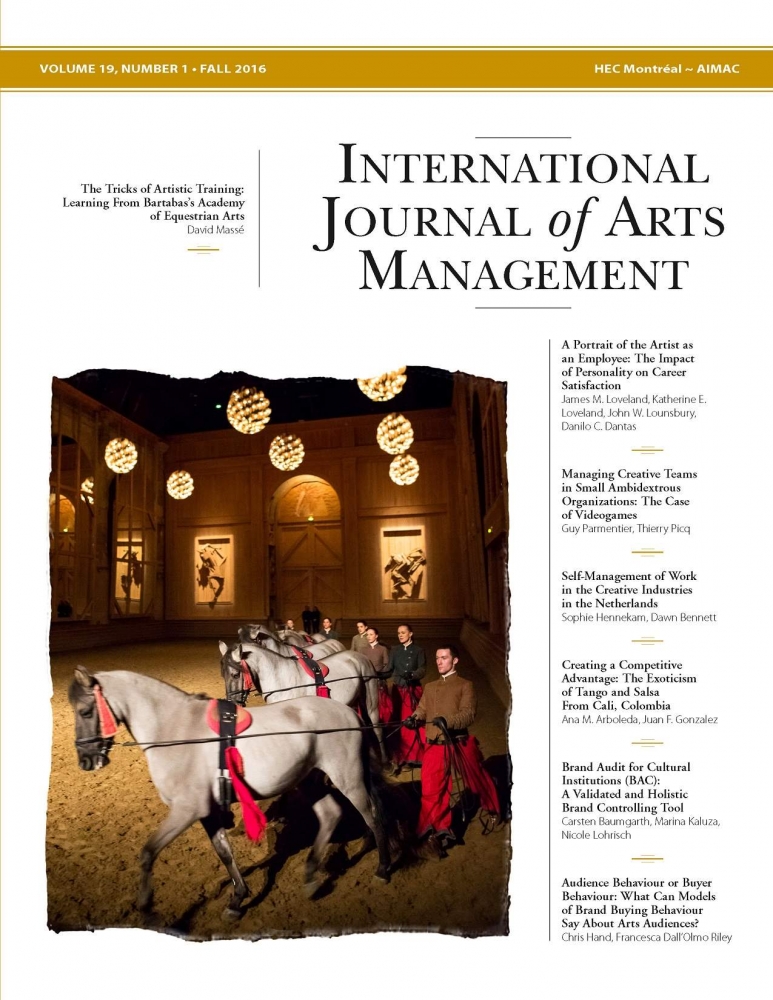IJAM Volume 19 Number 1 (PDF)
Product: Journal
$53.00 CA
EDITOR’S NOTE
Dear readers,
This Fall 2016 issue of the Journal covers two themes in the field of arts and culture: human resources and marketing management. The first three contributions focus on the management of creativity, which is a key factor in the success of arts organizations.
Our first article, by James M. Loveland, Katherine E. Loveland, John W. Lounsbury and Danilo C. Dantas, explores the link between personality traits and career satisfaction among artists as employees. In investigating these personality traits, the article makes a substantive contribution to our conceptual understanding of the management of artists and their careers.
In the next contribution, Guy Parmentier and Thierry Picq analyze how videogame studios manage the tension between exploration and exploitation activities, since creative people are generally more motivated by the process than by the result. This simultaneous management of exploration and exploitation activities is known as “ambidexterity,” and the authors identify best practices in the videogame industry.
Our third article, by Sophie Hennekam and Dawn Bennett, provides insights into the strategies employed by creative workers in the management of their careers in the Netherlands. By focusing on people for whom work is sporadic, this study highlights how creative workers manage multiple concurrent roles, unstable income, professional development and identity.
The three succeeding contributions in this issue focus on marketing. First, Ana M. Arboleda and Juan F. Gonzalez carry out an exploratory study of a strategy – exoticism – for gaining a competitive advantage in the cultural industries. The next article presents a tool for the systematic evaluation of the brands of cultural institutions. Carsten Baumgarth, Marina Kaluza and Nicole Lohrisch investigate how a systematic evaluation of brands may benefit cultural organizations. In our third marketing article, Chris Hand and Francesca Dall’Olmo Riley investigate the extent to which significant overlaps in brand purchasing behaviour apply to “omnivore” audience behaviour in the arts. Basing their study on the British government’s Taking Part survey, the authors bring a new perspective to market development strategies in the arts.
Finally, David Massé contributes the Company Profile in this issue of IJAM. His article profiles the Academy of Equestrian Arts in Versailles, France. The author goes beyond the fascination surrounding creative activity to analyze how an artist such as Bartabas structures the transmittable dimension of his work.
Happy reading!
André Courchesne
Editor
